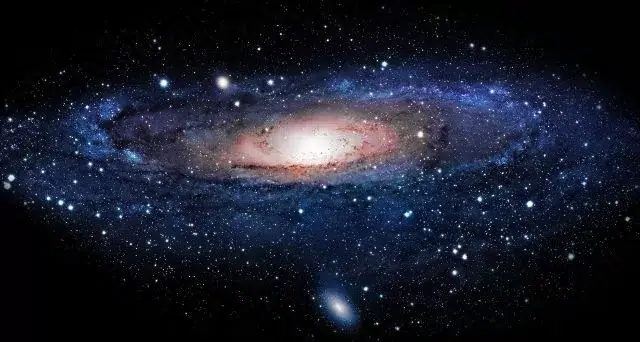Climate Change Issue
Anthropogenic climate change has emerged as the top global priority worldwide. Nations worldwide have to do their part in mitigating a ‘climate catastrophe’ before it’s too late.
India has made major strides over the last decade, yet continues to be labelled as one of the largest polluters in the world and is frequently chastised for not doing enough.
With Climate Change as the new North Star for the world, it is now well-established that 196 countries must meet their individual commitments under ‘Nationally Determined Contributions’ towards reducing carbon emissions ‘to limit the global temperature increase to 1.5 degrees Celsius above pre-industrial levels.
Greenhouse gas (GHG) emissions, particularly carbon dioxide (CO2), primarily contribute to adverse climate change. The Intergovernmental Panel on Climate Change (IPCC) paints a dire picture – emissions pose a serious threat since CO2, once released into the atmosphere, can hang for 300 to 1000 years, causing global warming and environmental destruction such as the melting of polar ice caps.
International Declarations
International Declarations that committed to different ideas
- 2005 G20 meet discarded one size fit all model [OSFA] of development
- In 2010-13 UN which had proposed OSFA in 1951 explicitly discarded it
- In 2015 MDG goals explicitly said Economic Development has to be founded on culture
- In 2015 NITI Aayog formation resolution the Union cabinet said that we need Bharatiya Model of Development and do what works in and for India
WEO Proposal
WEO-2023 proposes a global strategy for getting the world on track by 2030. The Five Key Pillars to this proposal include:
- Tripling global Renewable Energy Capacity.
- Doubling the rate of Energy Efficiency improvements.
- Slashing methane emissions from fossil fuel operations by 75 per cent.
- Innovative, large-scale financing mechanisms to triple clean energy investments in
emerging and developing economies. - Measures to ensure an orderly decline in the use of fossil fuels, including an end to new
approvals of unabated coal-fired power plants.
Core Problem of Climate Change
Toilet Paper Issue
The entire developed world uses toilet paper made of ‘virgin wood’ for the most regular body activity, every single day, multiple times over. One of the best global sustainability blogs ‘TreeHugger’ states that ‘Making one single roll of toilet paper uses 1.5 pounds of wood, 37 gallons of water and 1.3 kWh of electricity. Many Asian countries provide valuable lessons around these, yet their non-capitalist strategies often remain excluded from mainstream discussions because Behavioural and Lifestyle Change seems to be more difficult than Climate Change.
Solar Panel Issue

There is hardly any inequivalence foundationally between extracting earth for one resource over another. Solar panels may generate renewable energy, but solar batteries are formed of materials extracted from the earth’s crust, particularly Lithium, Cobalt, Nickel, and some rare earth minerals. According to some estimates, this not only leaves ‘large scars in the landscape’ but requires substantial water, releasing about 15 tonnes of CO2 per tonne of mineral. Bringing the extracted ore to usable forms requires heat between 800-1000 degrees Celsius, temperatures that can, ironically, be cost-effectively brought out by only burning fossil fuels.
Li-ion batteries issue
Cobalt and Copper, used extensively in Li-ion batteries, electric vehicles, and mobile
phones, have a raging sustainability crisis at the heart of their extraction. About four-fifths of
the world’s cobalt supply is buried deep within a single country that is also one of the world’s
poorest – the Democratic Republic of Congo (hereafter referred to as Congo). About 80% of
the country’s cobalt production is controlled by Chinese companies who refine in China, and
subsequently sell to battery manufacturers globally.
Emission Effects of Renewable Energy
The generative value chain of ‘clean energy’ products such as solar panels and windmills,
stretching from mining to manufacturing to transportation to use to the last stage of disposal,
has similar emission effects as other fuels would, depending on material and distances travelled.
For example – switching to EVs requires uprooting the existing network of petrol pumps
and creating a new network of charging stations involving all of the above. Unfortunately, all
of these “hidden costs” – both from a monetary, and an environmental perspective are not
accounted for in the lifecycle costs when advocating for the displacement of fossil fuels with
renewable options.
There is not enough research on how much the end-to-end lifecycle costs. Land is finite,
but demand is not. Solar can need 300 times as much space as nuclear, and biomass more than
8,000 times14. At the same time, wind turbine blades and solar panels have to be replaced every
couple of decades, resulting in potentially enormous waste problems.
The current Climate Change strategy seems to say that given that our energy needs will continue to rise, we must try replacing conventional fuel with renewables and clean energy – thus making it a substitution issue rather than a global lifestyle issue. This replacement must be done only in the way we know – through swapping of one preferred industry to another, through the creation of new transportation and supply lines in place of existing ones, to penalising the low-emitters with disproportionately higher payments.
Overconsumtion Issue
What this strategy doesn’t do is attack the root of the problem – overconsumption, which is starker among developed countries. Moreover, do each of us really need multiple screens, even if they are charged by renewable energy sources, or must everyone fly off to a fancy destination in fancy planes for a great conversation on reducing climate impact, or that we must eat for taste what we shouldn’t eat for health or environment.
On the other hand, the developed world is in a mad ‘Scramble for Africa’ kind of rush to usher in the latest and the most expansive AI (Artificial Intelligence) ecosystem. The fact is that AI is an energy guzzler. Even as the data centres are ramping up energy demand, cloud storage facilities, crypto mining, and AI are all expected to increase this exponentially.
As per a broad estimate by the International Energy Agency, a single Chat-GPT search consumes 10 times more energy than a similar query on Google. One large data centre in Iowa owned by Meta is estimated to burn just in one year, the equivalent of 7 million laptops working 8 hours a day. Power demand from data centres globally could reach up to 1,000 TWh by 2026.
Per capita Energy Consumption
It is said that India is the 3rd largest emitter after the US and China and, therefore, is repeatedly asked to accept a greater share of responsibility. What is constantly de-emphasised is that since the period of the first settlement of societies, western nations with a forward position on the industrial revolution indulged in fossil-fuelled development with reckless abandon that led to the position the world is in today.
Energy is a per-capita phenomenon. To put it simply:
Energy Consumption (at time T) = Energy consumed by 1 person (E1) * Number of people (N)+Energy consumed by common activities required for N (EN)
Because all modern policy-making starts from baseline assessment, it is essential that the climate target for each country is proportional to its economic status.
Research shows that developing countries require ~USD 6 trillion by 2030 to achieve just about
half of their existing NDC targets. Against this, only USD 100 billion was pledged by developed
countries till 2020, of which only USD 83.3 billion was provided.
India’s Achievements
India’s achievements against targets for climate change
- Successfully reduced the emission intensity vis-à-vis its GDP by 33% between 2005 and 2019, thus achieving the initial NDC target for 2030, 11 years ahead of scheduled time.
- Also achieved 40% of electric installed capacity through non-fossil fuel sources, nine years ahead of the target for 2030. Between 2017 and 2023, India has added around 100 GW of installed electric capacity, of which around 80% is attributed to non-fossil fuelbased resources.
- India’s contribution to climate action is significant through its international efforts – International Solar Alliance (ISA), Coalition for Disaster Resilient Infrastructure (CDRI), creation of LeadIT, Infrastructure for Resilient Island States (IRIS), and Big Cat Alliance.
Mission LiFE
It derives its philosophy from ancient Indian philosophy that espouses a naturally sustainable lifestyle in accordance with nature, steering individual actions and collective demand towards pro-planet choices.
These considerations served as the foundation for Mission LiFE, a unique initiative announced by the Hon’ble Prime Minister at the 2021 UN Climate Change Conference.
It encompasses a comprehensive but non-exhaustive list of 75 LiFE Actions for adoption by individuals to live more sustainably.
India needs to follow its own path and look at the problem through its own lens if the nation is to empower its citizens through economic development while simultaneously addressing the issue of climate change.
Conclusion
The hunger to consume more and more means we keep missing the bus in the global discourse on sustainability, by constantly suggesting rewiring the pathways to renewables rather than attacking the root of the problem. Treating the symptoms to cure a growing disease.
The criticisms of the Indian approach fail to recognise two critical points. One, India is faced with balancing economic development along with meaningful climate action akin to its developing peers, and second, the proposed solutions to climate change, which serve as the basis for criticising India, ignore how sustainable living is built into the Indian lifestyle.
Sustenance is at the core of Indian ethos. India’s ethos emphasises a harmonious relationship with nature, which is in sharp contrast to the overconsumption prevalent in other parts of the developed world.
Also, refer:







